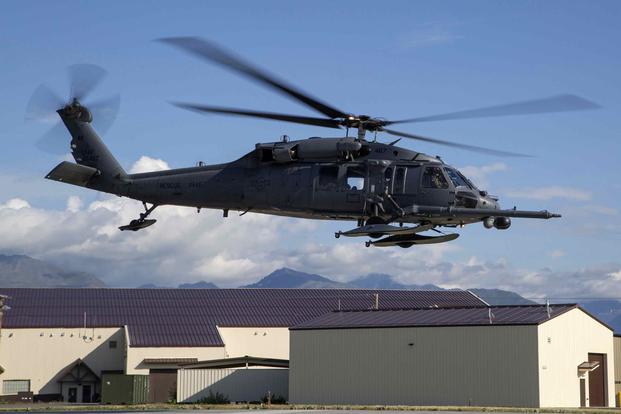When a hunter was severely injured in a 100-foot fall near the Eagle River Nature Center, north of Anchorage, the Alaska Air National Guard's 176th Wing came to the rescue, according to a Sept. 9 news release.
The injured man was able to use a satellite phone to reach the Alaska State Troopers, who then called in the Guard.
Read Next: A Fighter Pilot Will Dogfight an AI-Controlled Jet in 2024, Esper Says
The Wing immediately dispatched 212th Rescue Squadron pararescuemen (PJs) in a 210th Rescue Squadron HH-60G Pave Hawk helicopter. They had to battle a windstorm, rain and low visibility to get as close as possible; a combat rescue officer and two PJs then climbed 500 meters up the mountainside with their gear to reach the injured hunter.
The helo had to return to Joint Base Elmendorf-Richardson for another PJ to assist in the rescue. The PJs and CRO were able to stabilize the hunter, then rappelled him down the mountain by setting up a technical rope belay system and waded across the Eagle River with him to reach the helo. The patient and his hunting partner were transported to Providence Alaska Medical Center for further treatment.
"This mission highlights the exceptional synergy of our rescue community," Capt. Dan Warren, 212th RQS CRO and team commander for the ground rescue effort, said in a statement. "The Alaska State Troopers provided critical info, 176th Maintenance (Group) personnel rapidly prepared the helicopter for flight, the helicopter crew navigated harsh weather to employ us, and the unmatched resolve of fellow PJs to overcome brutal terrain to save a life is a humbling endeavor. The team effort is what enables our success."
Maj. Wesley Ladd, Alaska Rescue Coordination Center (AKRCC) senior controller, credited the hunter with taking advantage of the satellite communication device.
"Even close to a city, cold and wet conditions can lead to injury, especially with challenging terrain," he said. "Have a plan and carry a satellite communication device for if you need to call for help."
-- Bing Xiao can be reached at bingxiao2020@u.northwestern.edu.
Related: Inside the National Guard's Daring Rescue of Hundreds from a California Wildfire












